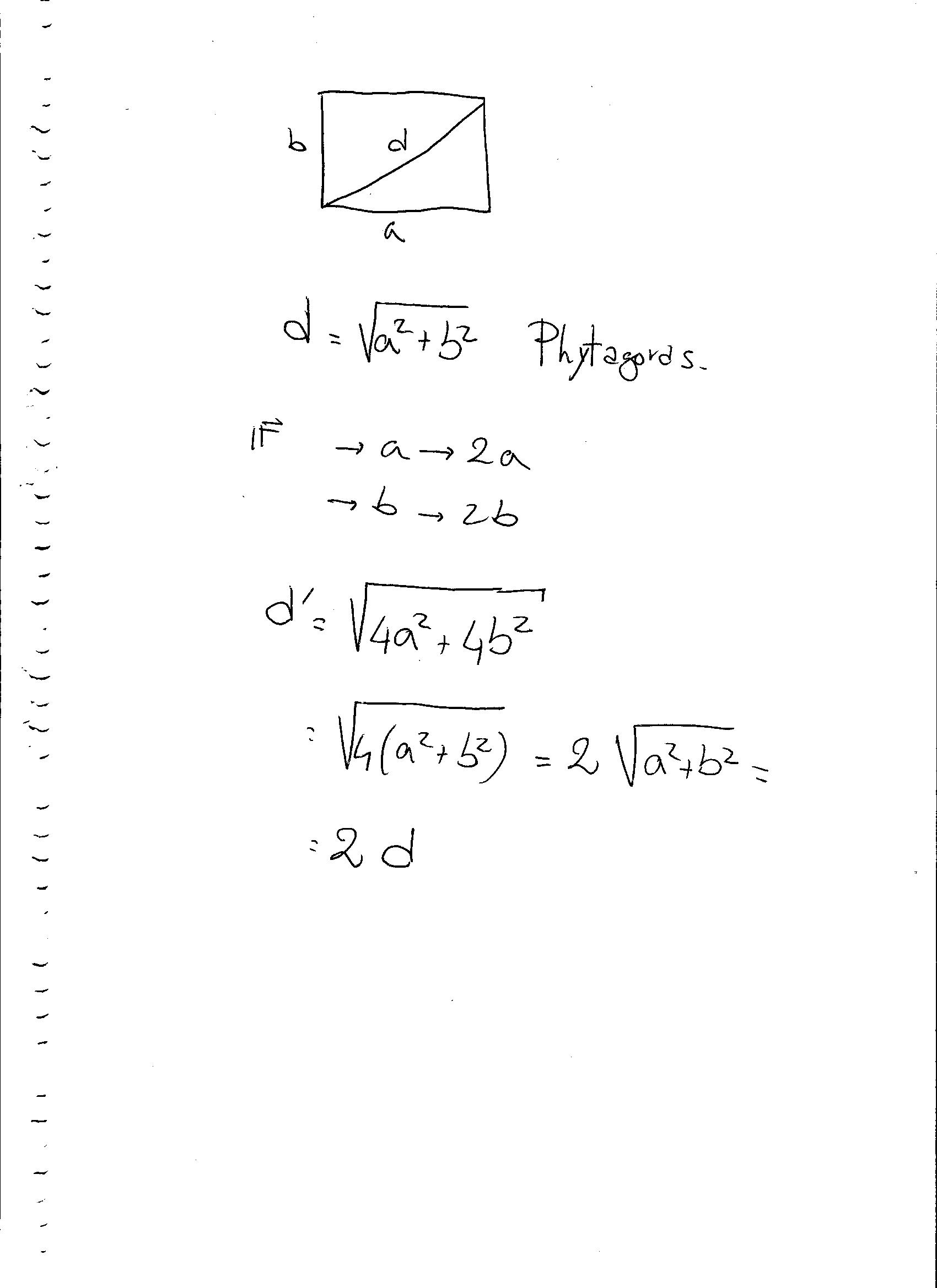If the length and width of a rectangle are doubled, by what factor is the length of its diagonal multiplied?
2 Answers
Sep 7, 2015
I found a factor of
Explanation:
Have a look:

Sep 7, 2015
Explanation:
The rectangle still has the same proportions, so every linear measure of it (e.g. perimeter) will be multiplied by the same factor.
Every area measurement of it (e.g. the area of a triangle formed by cutting it diagonally in two) will be be multiplied by the square of the linear factor.
If you're not convinced, suppose the original length of the rectangle is
Then the original diagonal measurement (by Pythagoras Theorem) is
The diagonal of the doubled rectangle will be:


